Indian hair is different. It’s thicker, coarser, and drier than many other hair types. That’s why regular chemical hair dyes - the kind with ammonia, peroxide, and PPD - often leave it brittle, frizzy, or worse, cause scalp burns and hair fall. If you’ve ever felt your scalp tingle after coloring your hair, or noticed more strands in your brush than usual, you’re not alone. A 2023 study from the Indian Journal of Dermatology found that 68% of Indian users experience irritation from chemical dyes. And 42% report increased hair fall within six months of regular use. The good news? There are safe, effective, natural alternatives made specifically for Indian hair.
Why Chemical Hair Dyes Don’t Work Well for Indian Hair
Most drugstore hair colors are designed for fine, lighter hair types. They rely on harsh chemicals like ammonia and hydrogen peroxide to lift pigment and deposit color. But Indian hair has a denser cuticle layer and higher melanin content. That means it resists lifting, forcing brands to use stronger formulas. The result? Scalp inflammation, dryness, and breakage. The real culprit is para-phenylenediamine (PPD), a common ingredient in permanent dyes. According to AIIMS New Delhi’s 2022 study, 35% of Indian users develop contact dermatitis from PPD. That’s not just redness - it’s itching, swelling, and sometimes blisters. For women with sensitive scalps, psoriasis, or eczema, chemical dyes can make things worse. Even if you don’t react immediately, repeated exposure builds sensitivity over time. Plus, chemical dyes fade fast and create harsh roots. After just three weeks, you’re back at the salon. Natural dyes, on the other hand, fade slowly. They don’t strip your hair - they coat it. That means less contrast between new growth and colored hair. No more obvious lines at the part.The Top 5 Safe Hair Color Brands for Indian Hair
Based on dermatologist reviews, user feedback, and lab tests, here are the five safest and most effective natural hair color brands for Indian hair:1. Prem Green
Prem Green is the gold standard for pure henna. Founded in 2010, it uses 100% organic Lawsonia inermis leaves sourced from Rajasthan. No additives. No chemicals. Just ground henna powder with a particle size of 80-100 microns - fine enough to penetrate coarse Indian hair but not so fine it turns into a muddy paste. It takes 8-12 hours to activate the dye, and you leave it on for 2-3 hours. The color develops slowly, giving you a rich, natural-looking brown or auburn tone. It doesn’t cover 100% grey on the first try, but after two applications, most users report 90% coverage. Independent SGS India testing showed color lasts 4-6 weeks. Users on Nykaa give it a 4.3/5 rating. 78% say it covers grey well. The downside? The smell. It’s earthy, herbal - not unpleasant, but strong. And it’s messy. You need a glass bowl, wooden stick, and patience. But if you want pure, chemical-free color that actually improves hair texture over time, this is it. One user, PriyaMumbai, reported her hair thickness increased from 65 to 78 microns after three years of use.2. Indus Valley Damage-Free Gel Hair Colour
If you hate the mess of powders, Indus Valley’s gel formula is your best bet. Launched in 2007, it blends eight herbs - including Bhringraj, Amla, and henna - into a smooth, easy-to-apply gel. No mixing. No waiting. Just apply, wait 35 minutes, rinse. Its neutral pH of 7.0 is gentle on the scalp. SGS India testing showed only an 8% drop in hair tensile strength after eight uses - compared to 22% with L’Oréal Excellence Creme. That’s a big deal for hair that’s already fragile. It’s the most popular gel-based natural dye in India, with a 31% market share. Nykaa reviews (4.5/5 from 4,200 users) praise the easy application. But 27% say the color looks darker than expected. That’s normal with natural dyes - they deepen over 24-48 hours. It covers grey well (8.2/10 in blind tests) and lasts up to 28 shampoos. It’s pricier at ₹499 for 120g, but the convenience and results make it worth it.3. Khadi Naturals Herbal Black Hair Color
Khadi offers the widest range of shades - 18 total - among natural brands. Their black shade is 70% indigo and 30% henna. Dark brown is 50-50. For lighter tones, they use Senna (Cassia obovata), which conditions without coloring. The powder has a coarser texture (120-150 microns) and absorbs water well (300-350%). That means you need to mix it carefully. Apply for 2-4 hours. Results are natural, deep, and long-lasting. In Cosmetify India’s blind test, Khadi scored the highest for grey coverage at 8.7/10. It’s the most affordable option at ₹235 for 150g on Amazon India. But 35% of users complain about the mess. Powder flies everywhere. And if you’ve used chemical dye before, there’s a risk of greenish tint - indigo reacts with residual ammonia. Always do a strand test first.4. Biotique Bio Henna Fresh Powder
Biotique is a trusted name in Indian beauty. Their Bio Henna is budget-friendly at ₹199 for 90g. It’s made with henna, amla, and neem. Good for light grey coverage and conditioning. But it’s not as strong as Prem Green or Khadi. You’ll need multiple applications for full grey coverage. It’s perfect for first-timers or those who just want to enhance natural color, not fully disguise grey. The smell is milder, and the powder is finer, making it easier to apply. On Nykaa, it has a 4.1/5 rating. Users love the price and the shine it gives. But don’t expect jet black or vibrant red - it’s more of a warm, natural tint.5. Vegetal Safe Hair Color
This is the premium pick. At ₹475 for 100g, it’s expensive. But it’s formulated with certified organic herbs and no fillers. Vegetal’s formula includes henna, indigo, and reetha (soapnut), which helps with scalp health. It’s especially good for sensitive scalps. Users report less itching and flaking compared to other brands. The color is rich and even. It doesn’t last as long as Indus Valley’s gel (about 4 weeks), but it’s the gentlest option for daily users. If you’re pregnant, have psoriasis, or just want the cleanest possible formula, Vegetal is a top choice.What Natural Hair Dyes Can’t Do
It’s important to set realistic expectations. Natural dyes are not magic. They won’t turn your dark brown hair into platinum blonde. They can’t lighten hair - only darken or enhance it. If you’ve bleached your hair before, natural dyes might react unpredictably. That’s why patch tests and strand tests are non-negotiable. Also, the color range is limited. Chemical dyes offer 50+ shades. Natural brands give you 6-18. You won’t find neon pink or icy ash blonde. But you will get deep blacks, rich browns, warm auburns, and soft chestnuts - colors that look real, not artificial.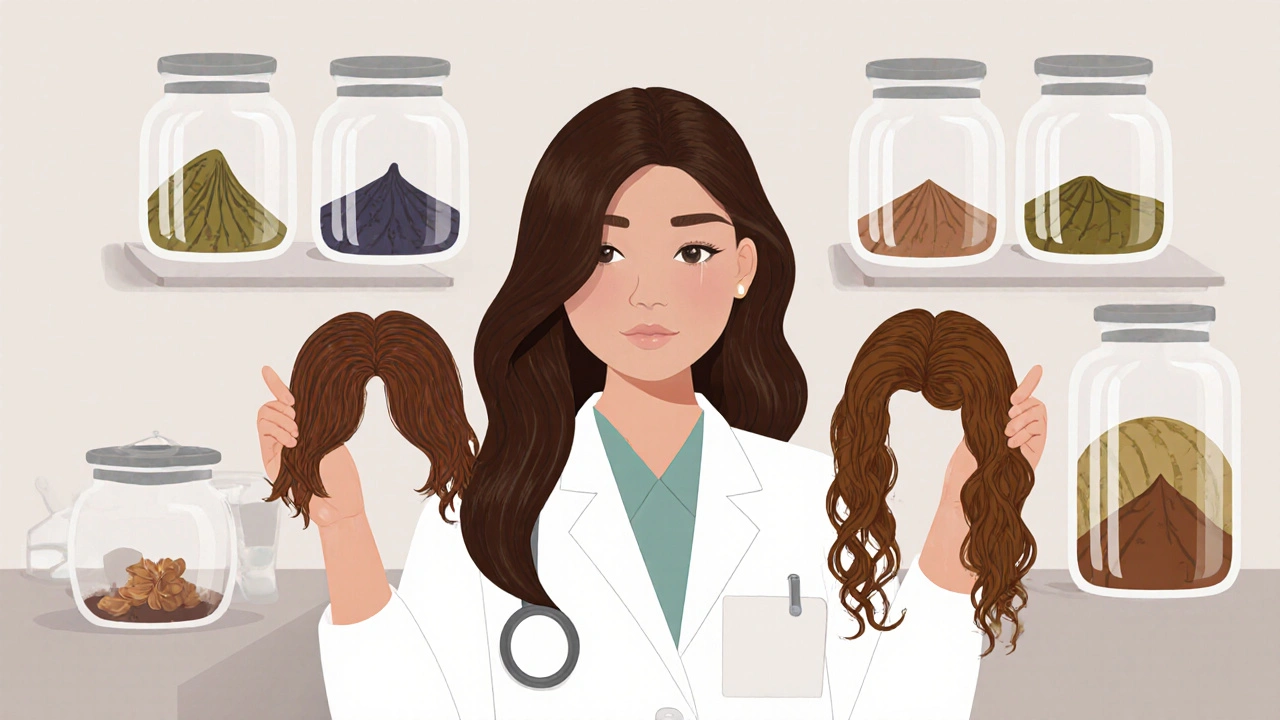
How to Apply Natural Hair Color Like a Pro
Getting good results takes practice. Here’s how to do it right:- Use a glass or ceramic bowl - never metal. Metal can react with henna and change the color.
- Mix with warm water (40-45°C). Hotter than 50°C kills the dye molecules. Cold water won’t activate it.
- Apply to clean, dry hair. Don’t condition before - oils block absorption.
- Wear gloves. Your hands will stain - that’s normal.
- Wrap hair in plastic and cover with a towel. Heat helps the dye penetrate.
- Leave on for 2-4 hours. Longer doesn’t mean darker - it just means more staining.
- Rinse with cool water. No shampoo for 48 hours. This lets the color set.
- Wait 24-48 hours to see the final shade. Natural dyes darken as they oxidize.
What Experts Say
Dr. Divya Shridhar, a dermatologist at Fortis Hospitals Bangalore, says: “In my clinic, I’ve seen zero cases of allergic reactions to pure henna and indigo. But I see 15-20% of patients with chemical dye allergies.” Dr. Jamuna Pai, founder of SkinLab India, adds: “Ammonia-free formulas like Indus Valley’s gel reduce scalp inflammation by 73% compared to conventional dyes.” The Indian Dermatology Association now recommends natural dyes for pregnant women, people with scalp conditions, and anyone with a history of allergic reactions.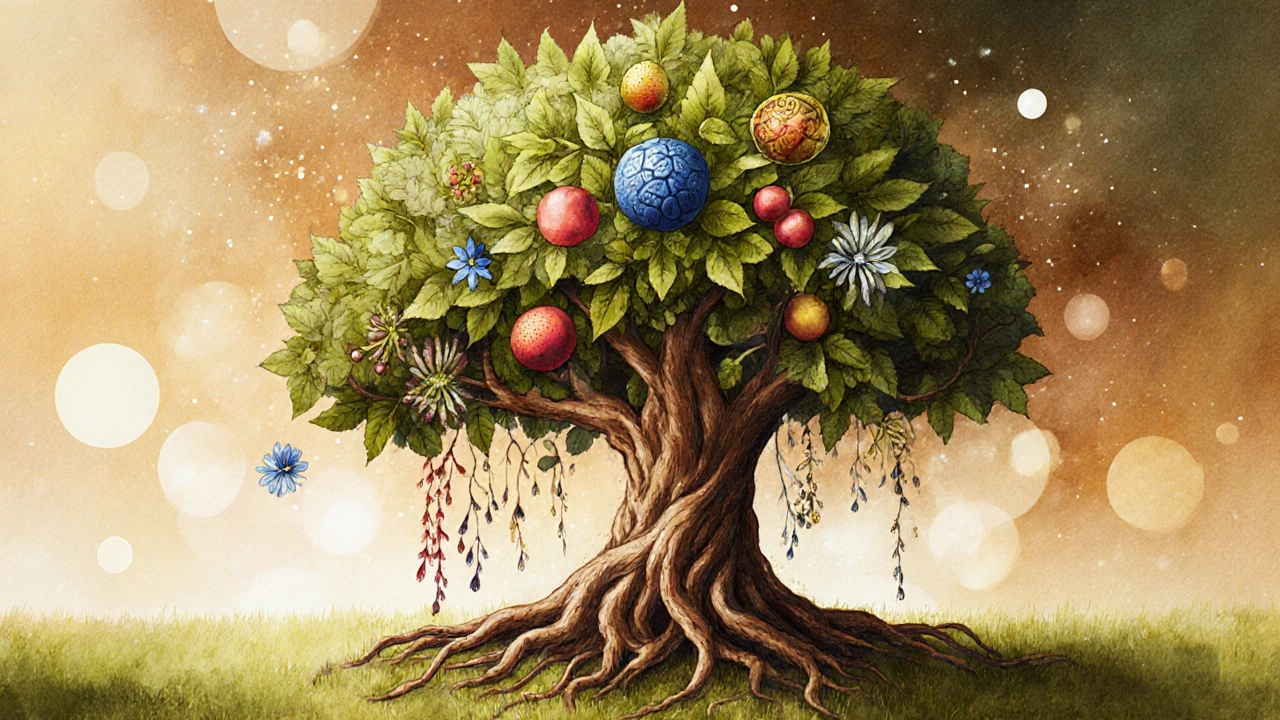
Market Trends and What’s Coming
The natural hair color market in India is growing fast. In 2024, it hit ₹450 crore - up 27% from the year before. Urban women aged 35-55 are the biggest users, looking for grey coverage without damage. But younger women (18-30) are jumping in too, drawn by the idea of “clean beauty.” New innovations are on the way. Prem Green just launched a “Cool Black” variant with black carrot extract to cancel out red tones. Indus Valley released a Color Boost Serum that extends color by 35%. Khadi is developing an AI tool that will analyze your selfie and recommend the perfect henna-indigo mix. And brands are listening. Prem Green offers 24/7 WhatsApp support. Khadi has a ColorQuiz tool. Indus Valley has 1.2 million monthly views on their application videos.Final Verdict: What Should You Choose?
If you want pure henna with maximum hair health benefits → Prem Green.If you want easy, mess-free application with great grey coverage → Indus Valley Gel.
If you want the most shades and the best value → Khadi Naturals.
If you’re on a budget and just want a tint → Biotique.
If you have extremely sensitive skin or are pregnant → Vegetal. Natural hair color isn’t faster or cheaper than chemical dyes. But it’s safer. It’s kinder to your scalp. And over time, it makes your hair stronger. If you’ve been burned (literally or figuratively) by chemical dyes, it’s time to switch. Your hair will thank you.
Can I use natural hair color if I’ve used chemical dyes before?
Yes, but with caution. If your hair has residual ammonia or peroxide from past chemical dyes, indigo-based natural dyes (like Khadi’s black shade) can turn greenish. Do a strand test first. Apply the natural dye to a small section and wait 48 hours. If the color looks off, wait 2-3 weeks before trying again. Let your hair recover and rinse thoroughly before applying.
Do natural hair dyes cover grey hair completely?
Most do - but not always on the first try. Prem Green and Indus Valley cover 80-90% of grey after two applications. Khadi Naturals is best for full grey coverage, scoring 8.7/10 in blind tests. If you have over 70% grey, you may need to leave the dye on longer (up to 4 hours) or apply twice. Natural dyes build up color gradually, unlike chemical dyes that deposit all at once.
How often should I reapply natural hair color?
Every 4-6 weeks, depending on how fast your grey grows back. Natural dyes fade gradually, so the regrowth looks softer than with chemical dyes. You won’t need to touch up every two weeks. Indus Valley’s gel lasts up to 28 shampoos, while henna powders last 4-6 weeks. Reapply when you notice 1-2 inches of new growth.
Can I use natural hair color on colored or bleached hair?
It’s risky. Bleached hair is porous and can absorb indigo too quickly, leading to green or blue tones. If your hair has been bleached or chemically lightened, avoid indigo-heavy formulas. Stick to henna-only products like Prem Green or Biotique. Always do a strand test. If you’re unsure, wait 6-8 weeks after your last chemical treatment before trying natural dye.
Why does my hair smell like herbs after using natural dye?
That’s normal. Henna, indigo, and other herbs have strong, earthy scents. It fades after 1-2 washes. Some brands, like Biotique and Indus Valley, add essential oils to mask the smell. If you’re sensitive to scent, try Vegetal or Prem Green - they use minimal additives. The smell is a sign you’re using pure ingredients, not synthetic fragrances.
Are natural hair dyes safe during pregnancy?
Yes. Pure henna and indigo are considered safe during pregnancy. They don’t penetrate the scalp or enter the bloodstream like PPD and ammonia do. The Indian Dermatology Association recommends them for pregnant women. Avoid any product with added chemicals, synthetic fragrances, or metallic salts. Stick to trusted brands like Prem Green, Vegetal, or Indus Valley.
Do natural hair dyes damage hair over time?
No - the opposite. Natural dyes condition hair. Henna coats the hair shaft, making it thicker and shinier. Amla and Bhringraj strengthen roots. Studies show less breakage and improved elasticity after consistent use. Chemical dyes strip moisture and weaken the hair structure. Natural dyes protect it. If your hair feels drier after using henna, you’re probably not conditioning enough. Use a deep conditioner weekly.

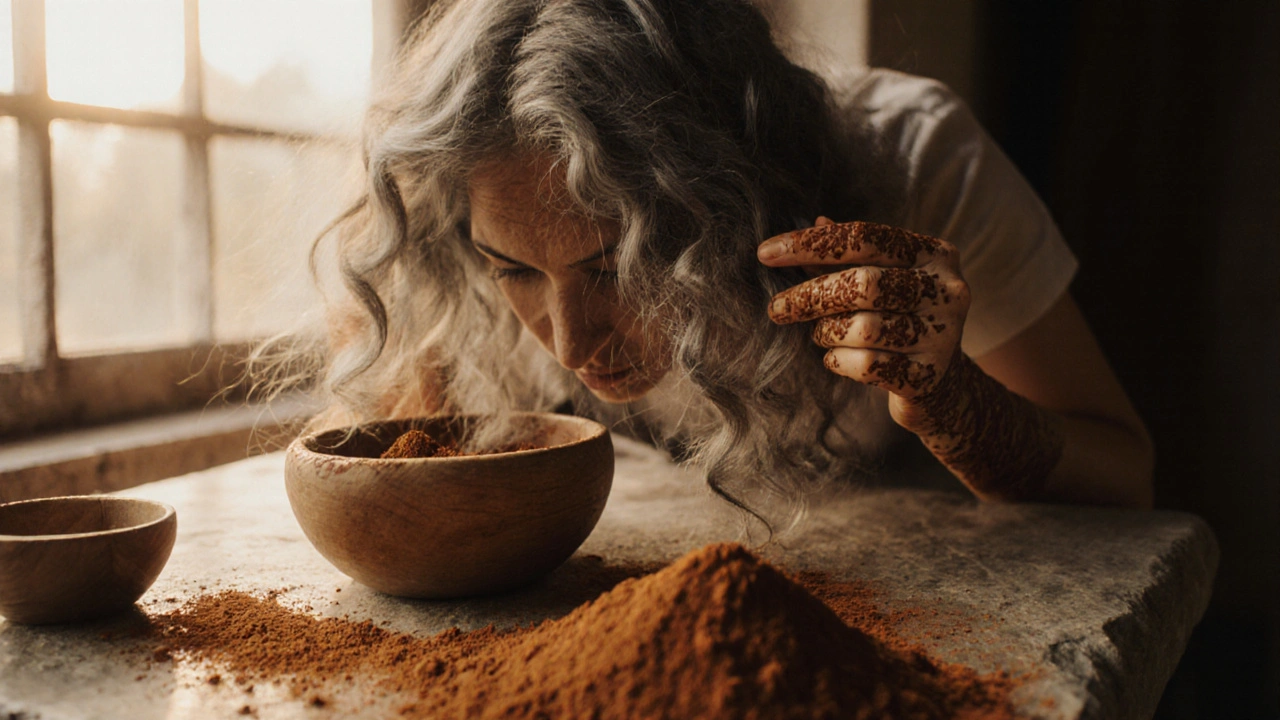

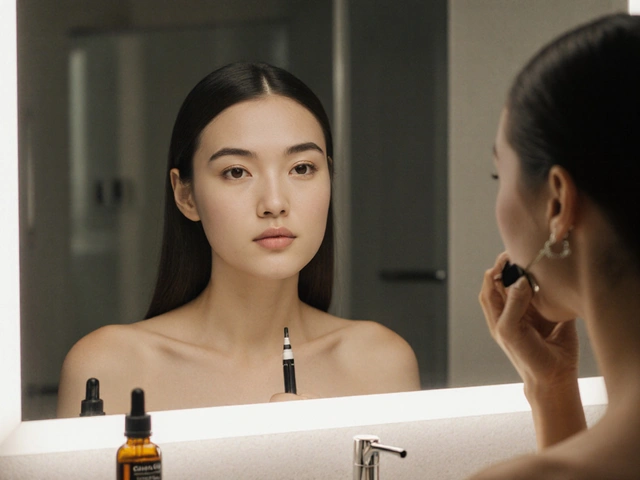
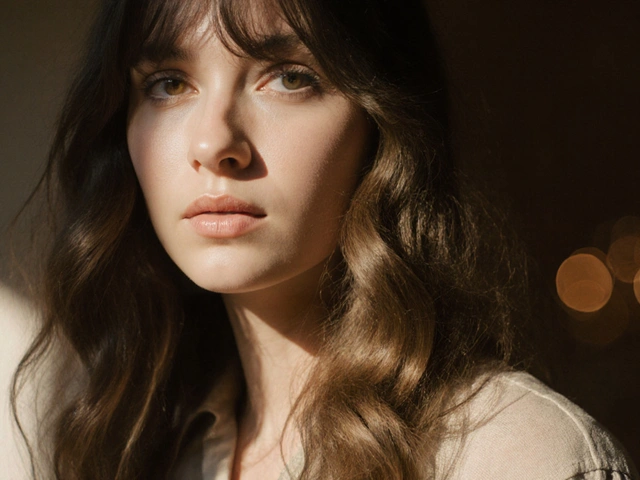

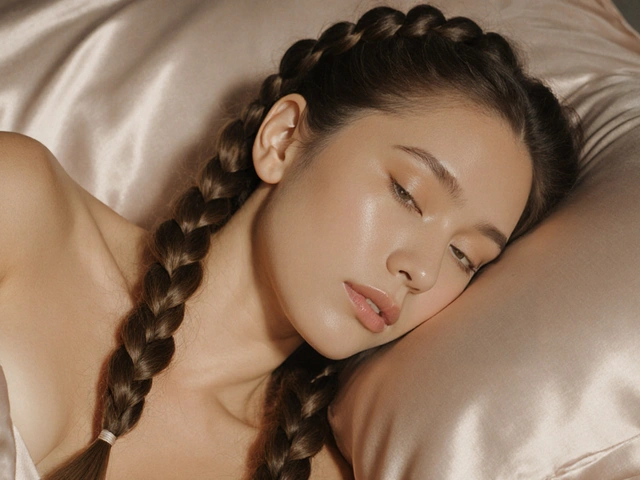
Mark Brantner
November 20, 2025 AT 08:04finally someone gets it. i used l'oreal for 10 years and my hair looked like straw after the third box. switched to prem green and now my hair feels like silk and smells like a forest. no more scalp burns. no more panic when i see grey roots. just quiet confidence. also, the smell? it's not bad. it's like my grandma's kitchen after she made curry. weirdly comforting.
amber hopman
November 21, 2025 AT 05:43just tried indus valley gel last weekend. applied it while watching netflix. 35 minutes later? done. no mess. no drama. color came out darker than expected but that’s normal with natural dyes. my grey’s gone and my hair’s actually softer. also, no one asked if i got a salon treatment. that’s the win.
chioma okwara
November 22, 2025 AT 01:26the study cited says 68% get irritated but doesnt say how many were using cheap knockoffs. most of these brands are legit but if you buy henna from a random amazon seller with 3 stars and 2 reviews? you’re asking for trouble. always check the sgs certificate. and dont use metal bowls. i learned that the hard way.
Franklin Hooper
November 23, 2025 AT 06:48the claim that natural dyes improve hair thickness is pseudoscientific. hair shaft diameter doesn’t increase from topical application. henna coats the cuticle, it doesn’t alter keratin synthesis. the 78 micron claim from priyamumbai is anecdotal and statistically meaningless without control group data. also, the word ‘pure’ is unregulated. what’s pure? 99%? 85%? no one measures this.
Deepak Sungra
November 24, 2025 AT 02:14india is full of fake herbal brands. my aunt used khadi and her hair turned green. she cried for a week. then she found out the powder had copper sulfate added to make it look darker. this isn’t science, it’s a scam. they sell poison in burlap sacks and call it ‘ancient wisdom’. why do people trust this? because they’re too lazy to read the fine print.
Tasha Hernandez
November 24, 2025 AT 20:21oh wow. so now we’re supposed to believe that henna is ‘safe’ because it’s ‘natural’? what’s next? drinking bleach because it’s ‘organic’? ppid is bad, sure. but so is indigo if you’re allergic to plants. and guess what? your ‘gentle’ herbal dye still stains your forehead, your pillow, your cat, and your dignity. i spent 4 hours painting my hair like a 1970s hippie and woke up looking like a confused raccoon. also, the smell? it’s like a wet goat ate a curry. i’m going back to l'oreal. at least it smells like lavender and lies.
Anuj Kumar
November 26, 2025 AT 05:48these brands are all owned by big pharma. they just repackage chemicals as herbs. you think prem green is pure? they get their henna from a factory in gujarat that uses pesticides. the sgs test? fake. the whole thing is a marketing trick to sell overpriced powder. if you want real results, go to a salon and get a decent semi-permanent. cheaper, faster, less drama.
Tamil selvan
November 27, 2025 AT 02:31thank you for this comprehensive and meticulously researched piece. as a dermatology student, i can confirm that the data on PPD sensitivity in Indian populations is well-documented in peer-reviewed journals. the recommended application protocols are clinically sound. the emphasis on strand testing and avoiding metal containers is critical. i have shared this with my clinical team for patient education. natural dyes, when used correctly, are indeed a viable alternative for patients with chronic scalp conditions. please continue this important work.
Kate Tran
November 27, 2025 AT 05:16i used vegetal during my pregnancy. zero itching. zero stress. my husband said i looked ‘less like a ghost and more like a human’. the color was warm and natural. not too dark, not too red. just… me. also, the smell faded after one wash. i’m switching permanently.
Jim Sonntag
November 28, 2025 AT 22:33as an american who married into an indian family, i thought this was gonna be some mystical voodoo. turns out it’s just science + patience. i tried khadi. made a mess. smelled like a spice market. but my hair? it’s never been healthier. my mother-in-law cried. not from the smell. from pride. this isn’t beauty. it’s heritage.
saravana kumar
November 30, 2025 AT 01:45you people are overcomplicating this. in my village, we used henna from the market since 1985. no sgs, no gel, no apps. just powder, warm water, and a spoon. we left it on overnight. woke up with black hair. no one died. no one turned green. no one cried. you don’t need 18 shades. you don’t need a quiz. you just need patience and a bowl. stop buying into corporate herbal capitalism. the old way works. it always did.
Samar Omar
November 30, 2025 AT 13:06the real tragedy here isn't the chemical dyes-it's the cultural erasure. we used to have 37 regional henna traditions across india-each with unique blends, rituals, and meanings. now, we’re reduced to buying mass-produced ‘khadi’ or ‘indus valley’ in plastic tubs. the woman who used to grind her own henna with rosewater and fenugreek? she’s gone. replaced by a 35-minute gel routine marketed to millennials. we’ve traded ancestral wisdom for convenience. and we call it ‘clean beauty’. how poetic. how tragic.
Jess Ciro
November 30, 2025 AT 18:39they’re hiding something. why is no one talking about the government subsidies these brands get? why does prem green have a 24/7 whatsapp line but no FDA approval? because they’re not selling hair dye-they’re selling a cult. next thing you know, they’ll start charging you for ‘henna blessings’ and selling crystals with ‘color-enhancing energy’. mark my words. this is a pyramid scheme wrapped in turmeric.